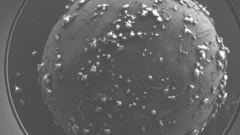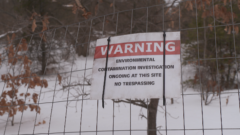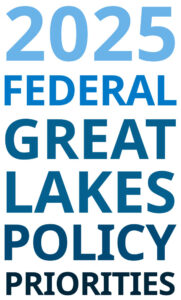New WRI communications director returns to roots in science communication
With a depth of experience in science communication and enthusiasm for Wisconsin’s waters, Andrew Savagian stepped into his role as the Aquatic Sciences Center’s assistant director for communications on Jan. 27.

“I’m excited for and humbled by this opportunity,” said Savagian. “We’ve got a great staff, and I’ve always been impressed with the work being done at both Sea Grant and the Water Resources Institute. I’m looking forward to being a part of that.”
Savagian leads strategic communication efforts for both Wisconsin Sea Grant and the Water Resources Institute, two federal-state partnership programs housed in the Aquatic Sciences Center at the University of Wisconsin–Madison that support research, education and outreach related to Wisconsin’s water resources. He leads a team of five communicators who write, edit, design, plan events, and create videos and podcasts to share the work of both programs.
“We are so excited to welcome Andrew to our team at the Aquatic Sciences Center and are looking forward to learning from him given his wealth of experience in communication on issues that are critical to our mission,” said Christy Remucal, ASC interim director.
Savagian’s latest role was managing internal communications at the Universities of Wisconsin, where he worked with staff across the state’s 13 public universities on higher education issues. Before that, he spent over two decades at the Wisconsin Department of Natural Resources in various roles, including communications section chief.
“The environment, environmental communication, science communication — that’s where my heart is,” he said.
While at the DNR, Savagian was a point person for communicating about topics like sand mining, water pollution, and per- and polyfluoroalkyl substances (PFAS). He cut his teeth communicating about efforts to clean up brownfields, which are properties contaminated by former industrial or commercial use. He pointed to several communities in Dane County that benefitted from the program.
“If you look at some of the cities around Madison, such as Waunakee, Sun Prairie, you can see the changes to their downtowns. Some really great work was done to provide seed money to leverage additional public and private investment to clean the sites up and make those downtowns viable again,” he said. “It was great to work with local communities.”
After years of communicating complex and sometimes controversial environmental issues with the public, Savagian can attest to the truth behind the old dictum, know your audience. “You need to meet people where they are from a communication standpoint,” he said. Using language the audience understands and sharing the message where they’ll see it, all while maintaining scientific accuracy, is a balancing act. “That will always be a challenge in science communication, and I love that challenge.”
And Savagian cares deeply about the topics he’s been encountering at Sea Grant. A self-proclaimed “huge national and state park fan,” he enjoys spending time outside with family, hiking, biking or paddling down one of Wisconsin’s many waterways. He’s eager to get back to the work of telling stories — no toe-dipping necessary.
“I’m ready to jump in with both feet,” he said.
The post New WRI communications director returns to roots in science communication first appeared on WRI.News Release | WRI
https://www.wri.wisc.edu/news/new-wri-communications-director-returns-to-roots-in-science-communication/




 Autumn McGowan serves as a program specialist for the Great Lakes Commission’s aquatic invasive species team. In this role she supports the work of GLC’s
Autumn McGowan serves as a program specialist for the Great Lakes Commission’s aquatic invasive species team. In this role she supports the work of GLC’s 






